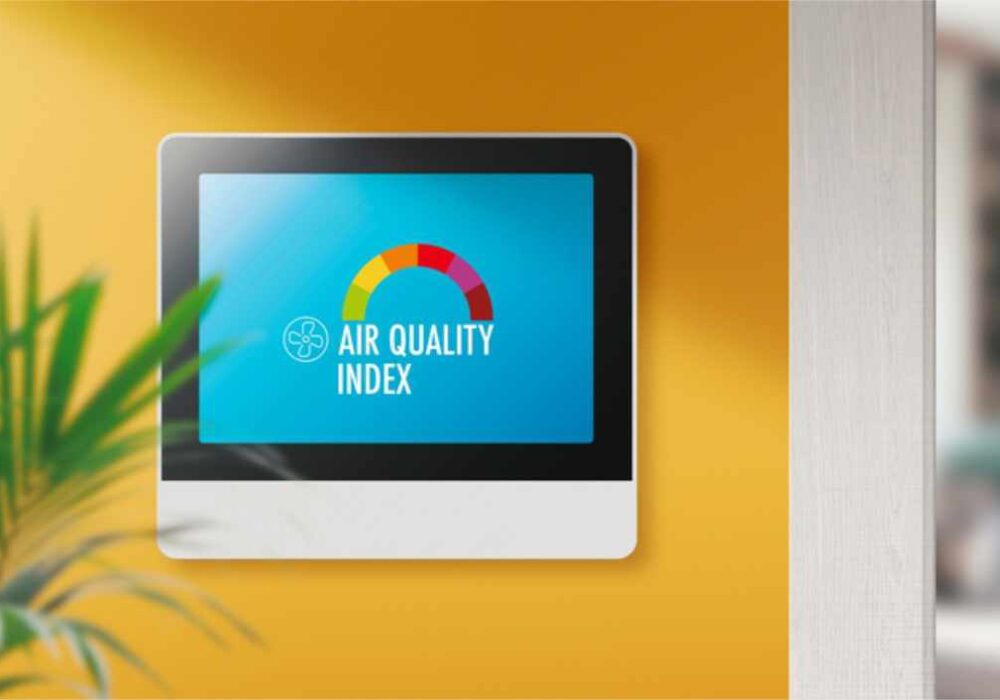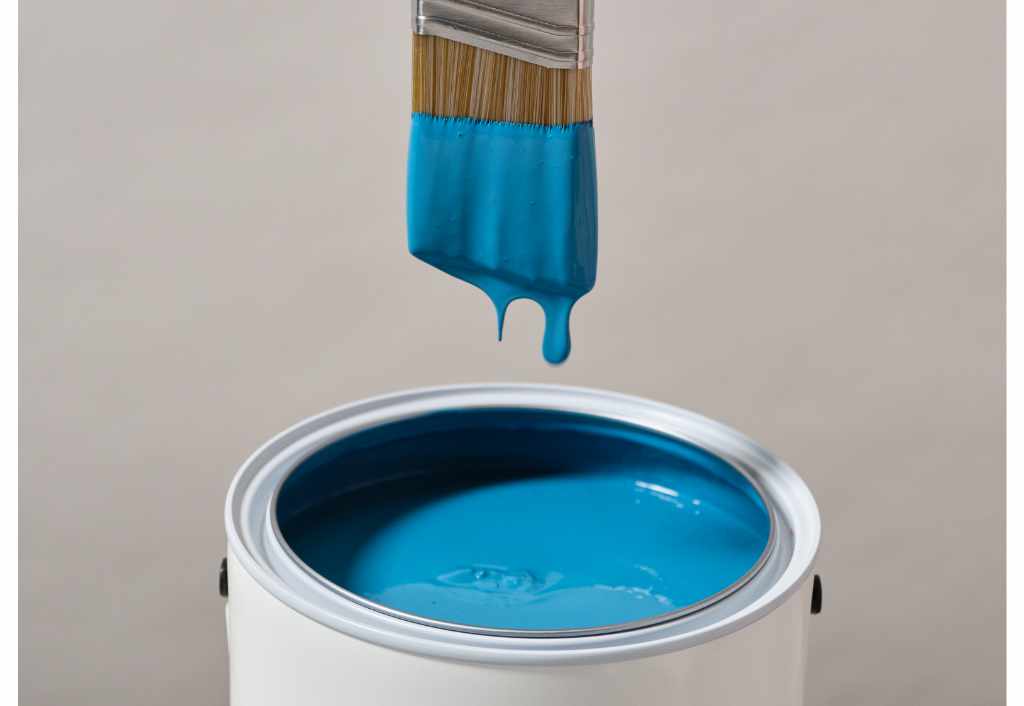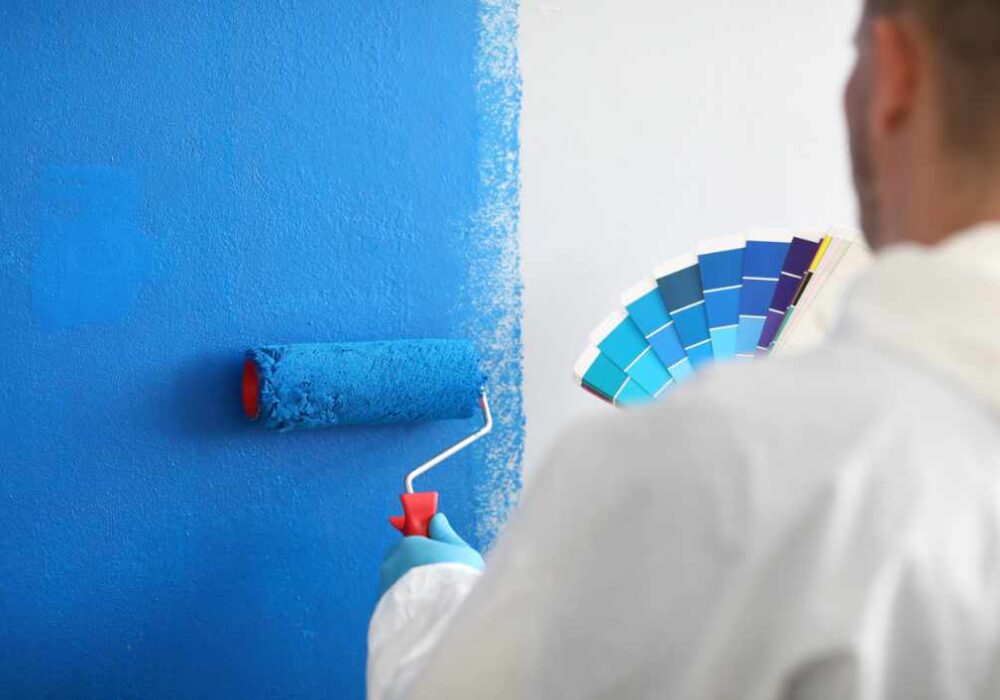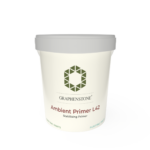Are you standing in the paint aisle, overwhelmed by the endless choices and unsure what…

A Complete Guide on VOCs and Paint
A Complete Guide on VOCs and Paint: What is VOC? Is It Harmful?
If you’re shopping for the best paint for your home or business, you might’ve noticed claims such as “Low VOC” or “Zero VOCs” in paint containers. VOC stands for Volatile Organic Compounds and even if you haven’t heard of them, they’re present in your home and in the environment.
This blog discusses VOCs, how they impact your health and indoor air quality, and what “low VOC” means in paint. With this information, you’ll have everything you need to make the safest choice for your home or office.
What Are VOCs in Paint?
As we said, VOC stands for volatile organic compounds—organic chemicals that are released into the air from different sources. Certain products, like paint, release them, but they’re also released naturally by plants.
In the paint industry, the most common VOC utilised is formaldehyde but there are many other compounds and ingredients in traditional paints. These ingredients have different levels of toxicity, which is why it’s important to notice what kind of chemicals are in your preferred paint brand.
Harmful VOCs in Paint to Look Out For
Have you ever noticed how you can smell certain cleaning products, even when the bottle is fully closed? That’s linked to VOCs. Most cleaning products contain VOCs, and as they release into the air, you can smell them. The same thing happens with paint.
Even though not all VOCs are toxic, many are. It’s important to know what to look for, to avoid bringing into your home or office products that can pollute your indoor air and the environment.
These are some of the most common toxic VOC’s used in paint:
- Benzene
- Formaldehyde
- Sputum eosinophil
- Ethylbenzene
- Ethylene Glycol
- Methylene chloride
- Toluene
- Xylene
- Hexane
- Styrene
- 1,2,4-Trimethylbenzene
There is a wide variety of volatile organic compounds, so we’re listing the most common ones. Before buying paint, make sure to read the label. There, you can see a breakdown of VOCs used in the ingredients and make an informed decision.
What’s “Low VOC” Paint?

You might have seen the claim “Low VOC” on certain paint brands. This can mean different things depending on the brand since there isn’t a regulation defining exactly how much is “low”. The regulations in place define the maximum amount of VOCs in grams per litre depending on the type of paint.
Usually, a “Low VOC” paint means that it falls under the maximum threshold allowed. For example, the VOC content limit for water-based paints for interior glossy walls and ceilings is 100 g/l. If a paint in this category is marked as “Low VOC” it should have less than 8 g/l of VOCs.
Because there is no exact legislation of what “Low VOC” means, it’s hard to differentiate mainstream brands and sustainable brands. Most mainstream brands sell products falling right on the limit while eco-conscious brands make efforts to reduce VOCs to the lowest possible level.
To give consumers a way to better identify paint manufacturers with the lowest VOCs, terms like “VOC-Free” and “Zero VOC” were introduced.
However, VOC-free paint is not possible and to avoid misleading consumers, The British Coatings Federation issued a ruling in 2022. The new ruling states that no paint can be Zero VOC.
To replace this term, they introduced a more accurate description of very low VOC paints “Trace VOCs”.
‘TRACE’ = VOC CONTENT <0.1%
‘MINIMAL’ = VOC CONTENT 0.1 – 0.29%
‘LOW’ = VOC CONTENT 0.30 – 7.99%
‘MEDIUM’ = VOC CONTENT 8 – 24.99%
‘HIGH’ = VOC CONTENT 25 – 50%
‘VERY HIGH’ = VOC CONTENT more than 50%
What Does Trace VOCs Mean?
If you see Graphenstone paints, you’ll notice the claim “Trace VOCs” in many of them. This means that our paints emit less than 0.1% of VOCs—the lowest possible amount.
At Graphenstone, we strive to create products that support your health and the environment. That’s why our paints have one of the lowest VOC levels you can get.
Plus, Graphenstone is the most certified paint brand on the market. And our paints are one of the most tested too.
VOCs can have serious health effects. It’s important to choose brands and products that see for your health, your family, and the environment.
The Impact of VOCs On Your Health

As we mentioned before, different VOCs have different levels of toxicity. They also have different effects on your health and the environment—including your home’s or office’s indoor environment and air quality.
Generally, breathing VOCs can cause irritation in the eyes, throat, and skin. It can also cause trouble breathing, headaches, asthma, and nausea. The long-term effects of VOCs can lead to chronic health effects and some are linked to cancer.
For paint, one of the most common VOCs used is formaldehyde. The impact on your health varies depending on the exposure—higher exposure means a higher risk. For lower exposure (breathing 0.1 to 0.5 ppm) the effects are irritation in the eyes and nose and a higher risk of asthma and allergies. A medium exposure (0.6 to 1.9 ppm) eczema and altered lung function have been observed.
For Benzene, another common ingredient of standard paint, long-term exposure can affect the bone marrow and lower red blood cells in your blood.
VOCs and Indoor Air Quality
Volatile Organic Compounds have a direct effect on your indoor air quality. This is why it’s essential for you to choose the products you bring into your home wisely. VOCs are in many everyday items, including cleaning products, furniture, air fresheners, cosmetics, and more.
For paint, most VOCs are released during the application, but some can continue creating fumes for days, months, and even years.
Studies have shown that indoor spaces have 2 to 5 times more VOCs in the air than the outdoors. You can improve your indoor air quality by choosing products with lower VOC emissions—like Graphenstone paints.
Choosing The Best Paint for Your Home
Improving your indoor air quality can be as simple as choosing Trace VOC paints. Your health should be the last of your worries when you’re painting your home, office, or painting for a client.
At Graphenstone we have a wide range of Trace VOC paints which were designed to release the least amount of VOCs possible—less than 0.1%.
To find out more about our range of eco-friendly paints, visit our website now or get in touch.







This Post Has 0 Comments